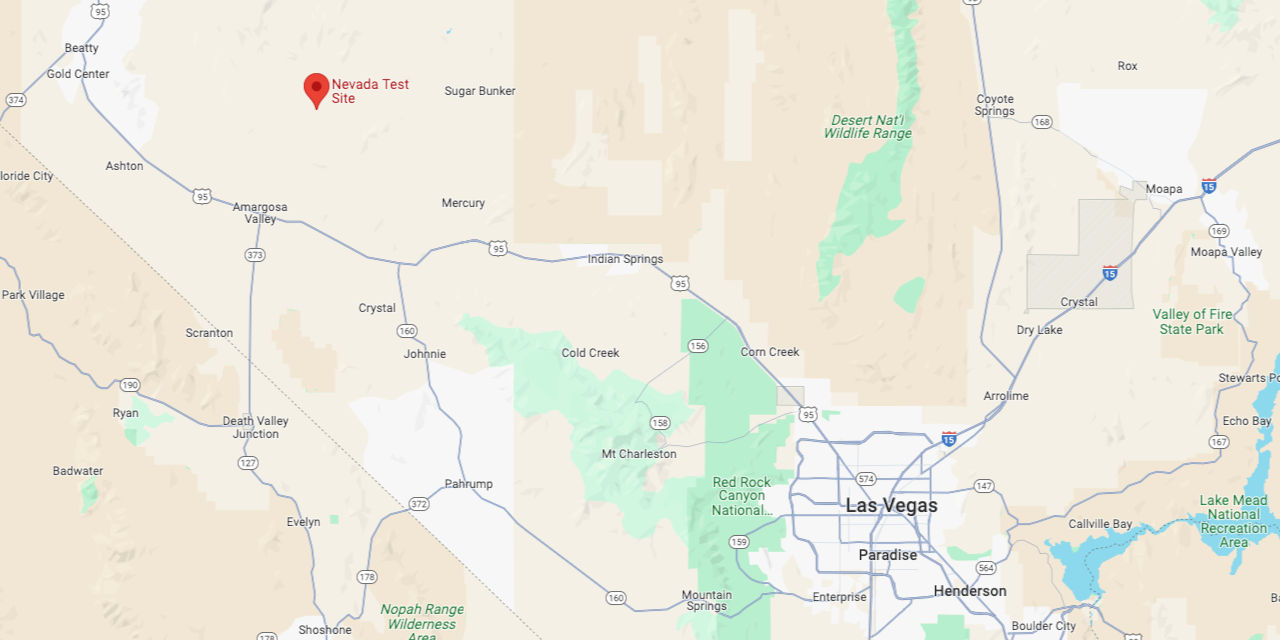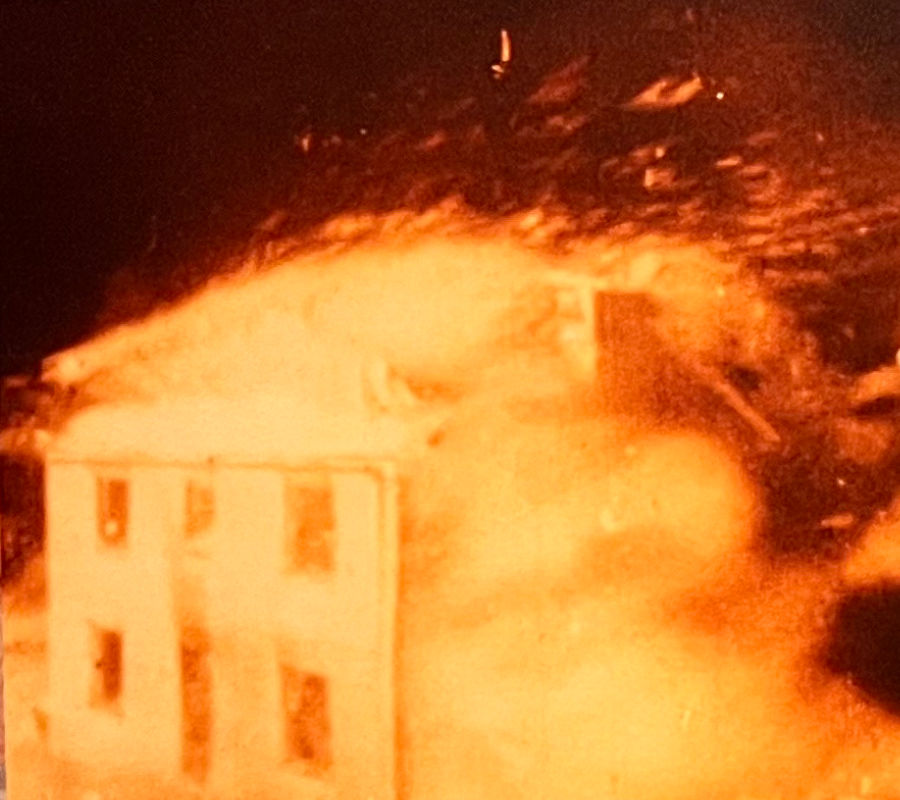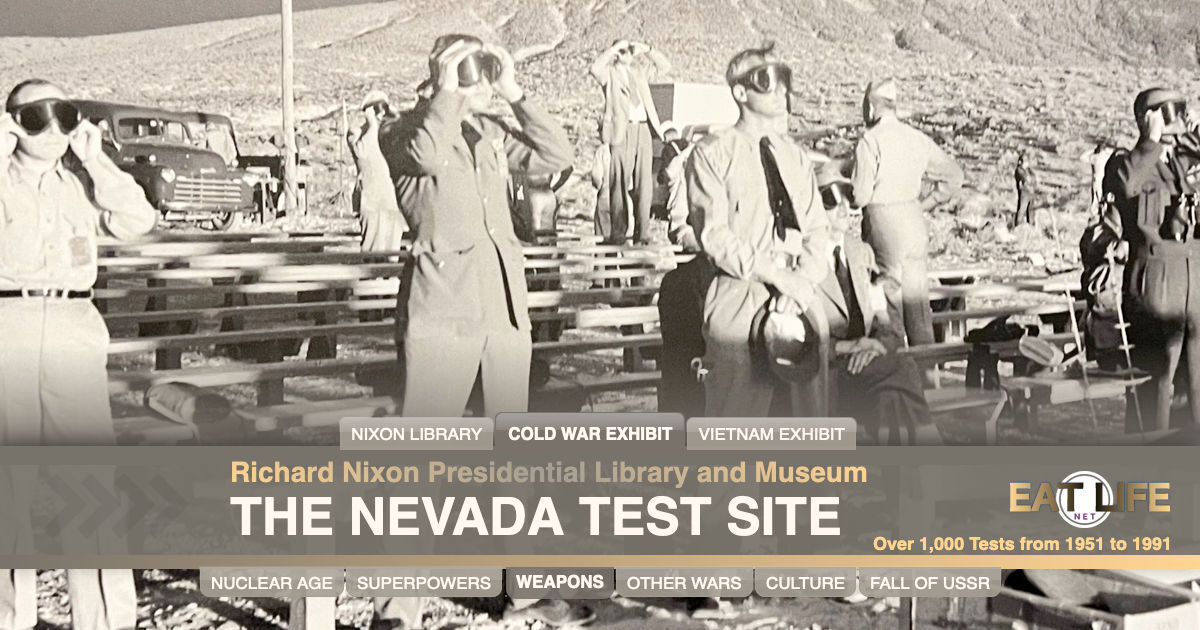In 1950, President Truman authorized the establishment of what would become known as the Nevada Test Site. Located 65 miles north of Las Vegas and initially covering 680 square miles, the first test took place on January 27, 1951. The final test - the 1,021st - occurred 41 years later.
Initially, tests were conducted above ground. These tests measured the impact of the weapons on the environment, man-made structures, and military equipment. Mushroom clouds from these tests were visible as far as 100 miles away.
These atmospheric tests produced large amounts of radioactive fallout, endangering the health of anyone near or downwind from the explosion. The last atmospheric test took place on July 17, 1962. Subsequent tests took place underground, where the possible spread of radiation and fallout was significantly reduced.
Although nuclear tests are no longer conducted at the Nevada Testing Site, the federal government continues to use the site for other national security purposes.
Suddenly, there was an enormous flash of light, the brightest light I have ever seen or that I think anyone has ever seen... It was seen to last forever. You would wish it would stop; altogether it lasted about two seconds.- Isidor I. Raab, Ph.D., physicist

https://www.google.com/maps/place/Nevada+Test+Site+Area+400

- NATO observers watch the BOLTZMANN test at the Nevada Test Site on May 28, 1957.

- This sample of uranium is a Uraninite and Gummite mineral.


Trinitite, also known as Alamogordo glass, is the residue left on the desert floor after the plutonium-based Trinity nuclear bomb test on July 16, 1945, near Alamogordo, New Mexico. It is mildly radioactive but safe to handle.
- In the late 1940s and early 1950s, samples were gathered and sold to mineral collectors as a novelty.

https://www.google.com/maps/search/frenchman+flat

- On April 15, 1955, observers from Canada and the United Kingdom watch a nuclear weapons test at Nevada's Frenchman Flat test site.

- This 1960s rotary phone provided one-way information on atomic tests to VIPs needing quick access to knowledge regarding tests and threats.








